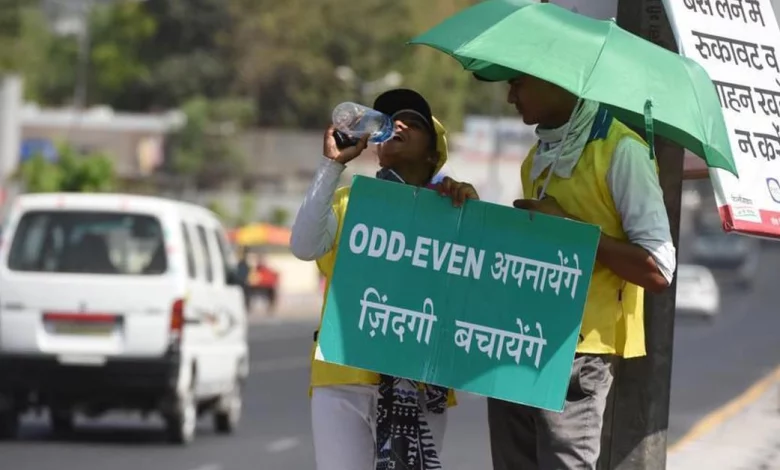Daily Current Affairs for UPSC
Delhi’s Odd-Even Policy
Syllabus: Environment and Pollution [GS Paper-3]

Context: The Delhi government has implemented the odd-even rule due to increasing air pollution in the city. Some data suggests that this vehicle restriction measure can reduce pollution levels, but experts disagree and believe it may not be enough to address the health impacts of pollution.
About Odd-Even Policy:
- The odd-even program, introduced by the Delhi government in 2016, allows private vehicles to be used on specific days depending on the last digit of their license plate number.
- Vehicles with even digits can be driven on even dates, while those with odd digits can be driven on odd dates.
Effect of Odd-Even Policy on Delhi:
- According to experts, odd-even is not a permanent solution because it doesn’t consistently reduce the number of vehicles on the road by 50%.
- Additionally, reducing emissions doesn’t always result in lower pollutant levels due to factors like wind speed.
- The evidence suggests that the impact of this phenomenon has not been consistent across all areas, with some experiencing reductions while others have not, or the reductions have only been temporary.
- There is no research indicating whether a slight decrease in air pollution levels has an impact on people’s health.
- Doctors at AIIMS, Delhi explain that even a 20% reduction in PM2.5 levels would still be harmful if they are above 500.
- Long-term exposure to pollution increases the risk of hypertension, diabetes, heart attacks, strokes, chronic lung diseases, cancers, lower immunity, and depression.
- Studies have shown that the odd-even scheme in Delhi has led to a small decrease in particulate matter, ranging from 5 to 10%.
- Satellite data from 2016 found a 2 to 3% decrease in PM2.5 concentration in most areas of Delhi during odd-even, with a larger decrease in certain pockets.
- Another study found an average reduction of 5.73% in PM2.5 levels and 4.70% in PM1.
- The studies suggest that lower PM levels may be due to fewer cars and faster traffic on decongested roads.
- The sharpest drop in PM levels was observed during midday rather than early morning.
- A study comparing PM levels during odd-even hours in 2016 with the previous year found a range of -2% to -44% during odd-even hours, but an increase of 2% to 127% during non-odd-even hours.
What actions should be taken?
- The focus should be on finding long-term solutions to pollution, such as phasing out vehicles that emit high levels of pollution and promoting the use of electric vehicles.
- Measures like the odd-even scheme should be implemented in a wider geographic area, not just in Delhi.
- It is important to involve all stakeholders and strengthen governance to effectively address pollution.
- Delhi’s Graded Response Action Plan, which takes anti-pollution measures based on air quality levels, should be adopted by other cities in India.
- It is crucial to monitor industrial pollution in real-time and involve communities in preserving urban spaces.
- Solutions like smog towers and watering roads are not effective, and progress lies in empowering people through good governance.
- Pollution guidelines and procedures should be easily accessible and integrated into daily life.
Conclusion:
- Research indicates that the odd-even policy in Delhi may have a small effect on reducing vehicle traffic and emissions, but it does not significantly address pollution.
- To effectively combat pollution, the Delhi government and the state governments of Haryana and Punjab need to collaborate on long-term solutions.
Source:IE





.png)



